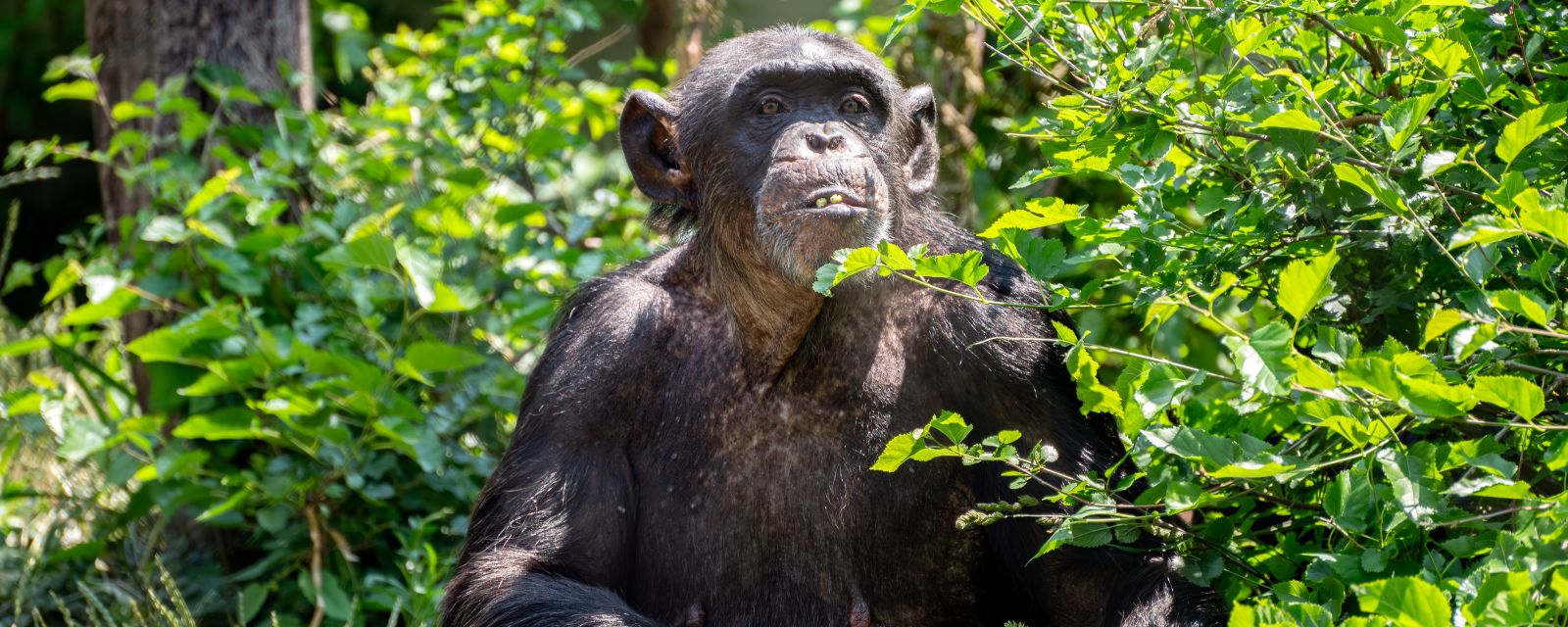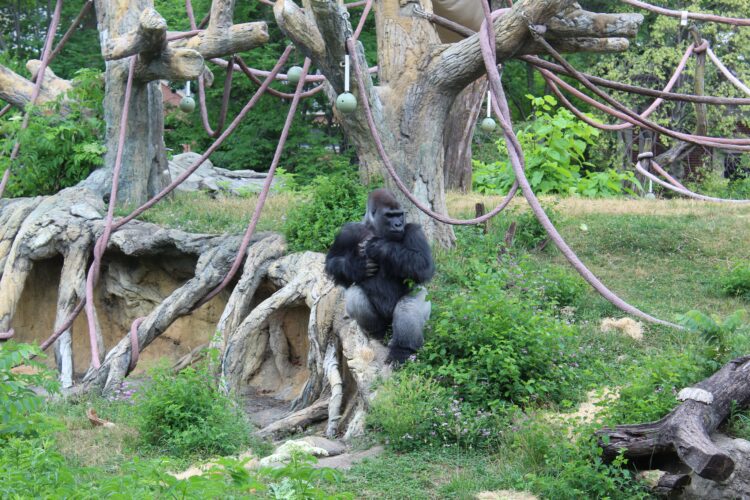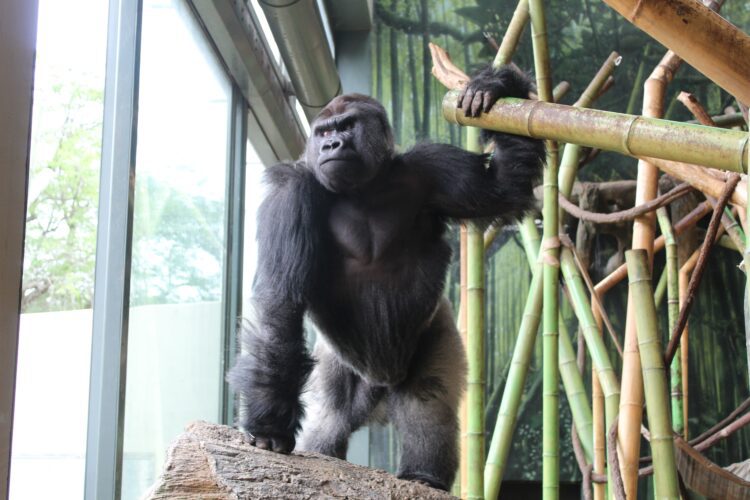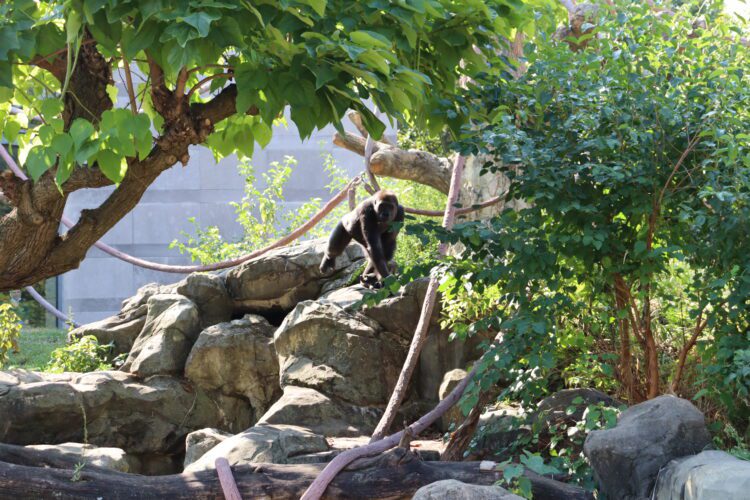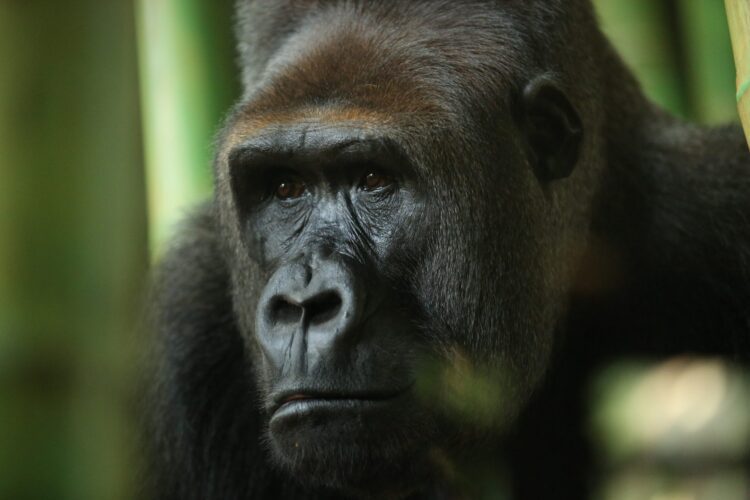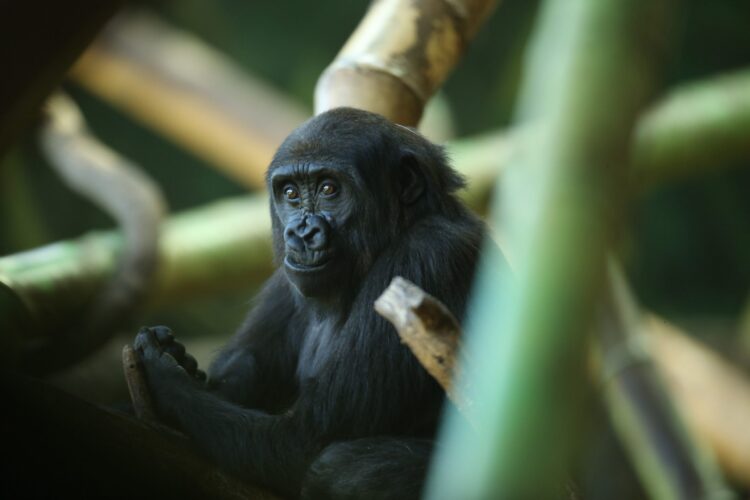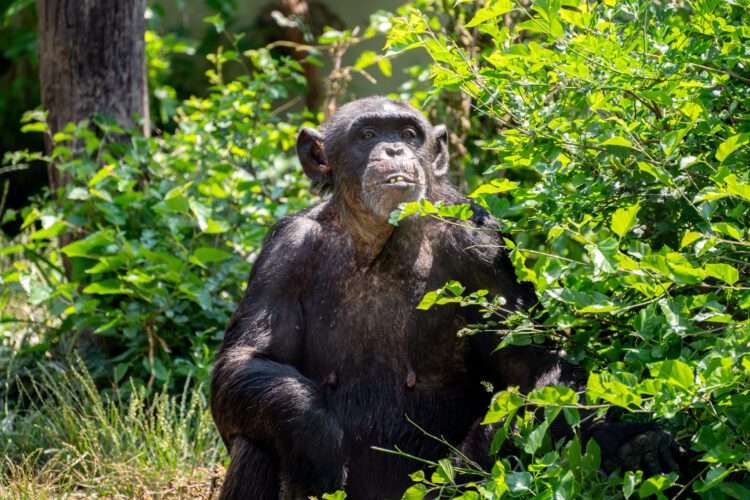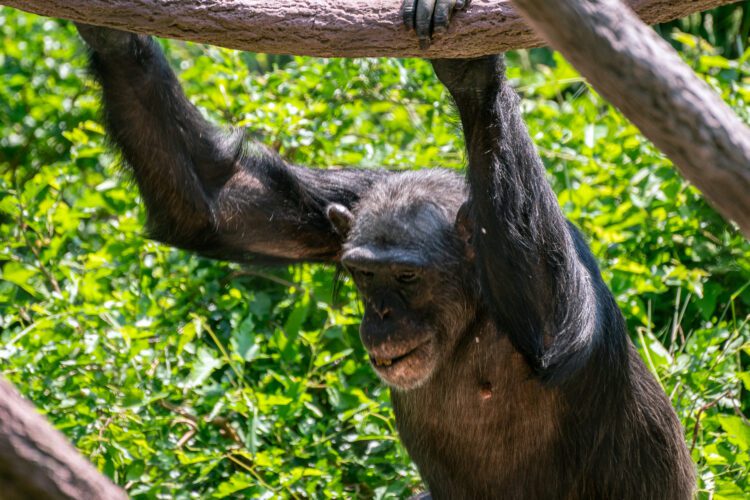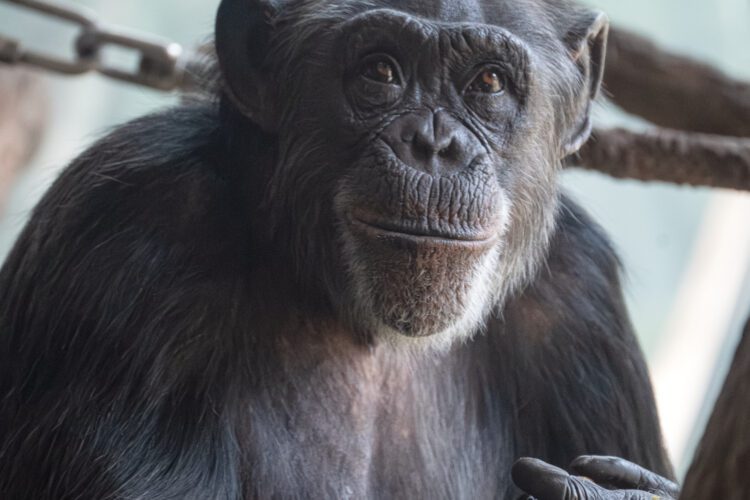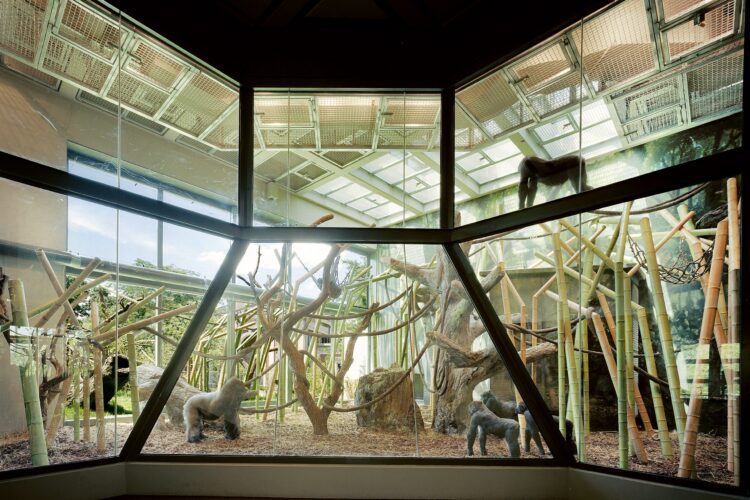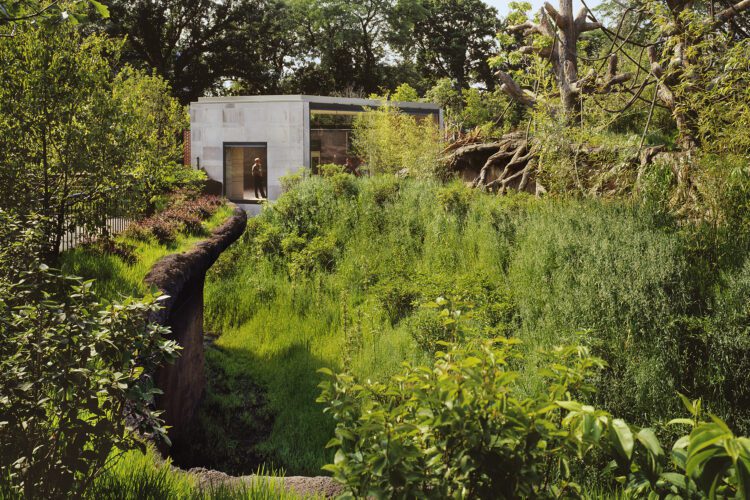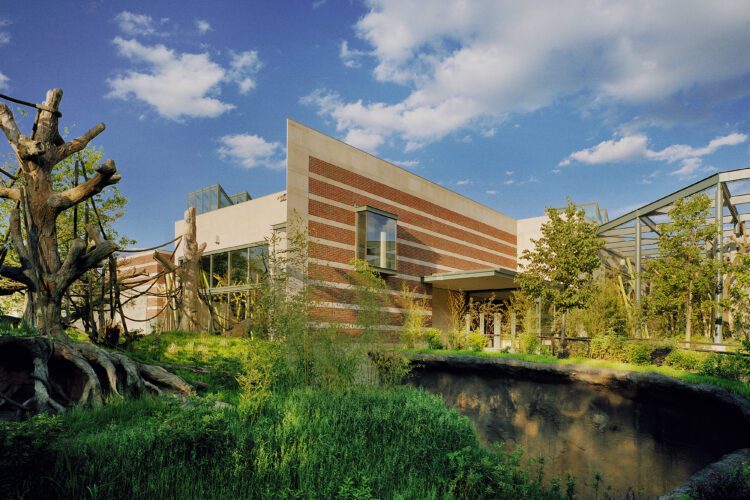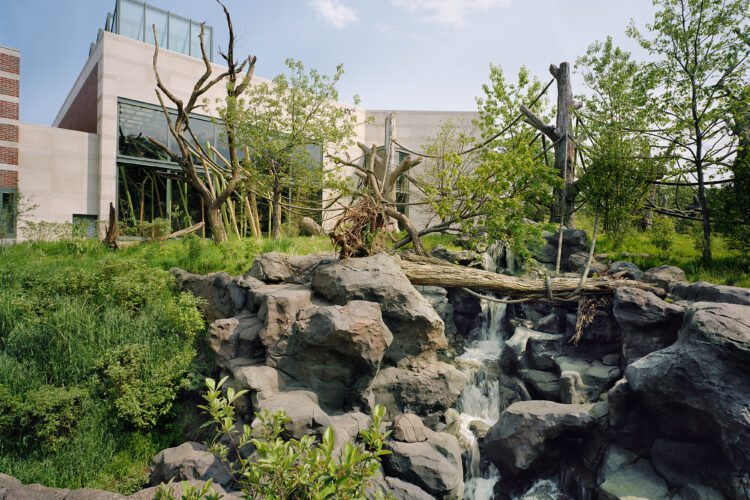The award-winning, state-of-the art Regenstein Center for African Apes features naturalistic indoor and outdoor living space for endangered chimpanzees and western lowland gorillas. Intensive behavioral research on chimpanzee and gorilla environmental preferences informed the design of these habitats. Currently in the building are two chimpanzee groups, one breeding group of gorillas, and one bachelor group of gorillas.
The habitats include fallen logs, water features, dozens of trees, and 5,000 feet of artificial vines for climbing and hanging. The chimpanzee exhibit also features functional termite mounds. There are three spacious, public-facing habitats: Kovler Gorilla Bamboo Forest, Strangler Fig Forest, and the Dry Riverbed Valley.
There is also an expansive behind-the-scenes indoor and outdoor area in which staff care for an off-view chimpanzee group that includes former primate performers and primates rescued from unaccredited zoos as a part of Lincoln Park Zoo’s ChimpCARE program. All exhibits support the great ape cognition research conducted by scientists at the Lester E. Fisher Center for the Study and Conservation of Apes, headquartered inside this building.
The Lester E. Fisher Center for the Conservation of Apes engages zoo visitors, members, students, and primatologists from around the world in science and conservation initiatives pertaining to great apes and Japanese macaques. A team of Ph.D-level scientists conduct research in the zoo and sanctuary settings and also in the wild, specifically in Tanzania and the Goualougo Triangle in the Republic of Congo. Lincoln Park Zoo also supports young primatologists, through internships, to ensure the advancement of great ape understanding and conservation.
Floor-to-ceiling windows give guests an opportunity to literally go nose-to-nose with curious and complex apes, who face a dramatic population decline in the wild due to poaching, habitat loss, and disease. Educational programs, such as the daily interpretation of ape cognition research sessions, further engage and inspire guests.
Fast Facts
OPENED: 2004
COST: $26 million
SIZE: 29,000 square feet of exhibit space not including behind-the-scenes areas or public viewing areas
LOCATION: East side of the zoo, south of Helen Brach Primate House
Exhibit Features
- Strategically designed, naturalistic indoor and outdoor spaces with fallen logs, water features, artificial termite mounds, dozens of trees, 5,000 feet of artificial vines, and a canopy of hammocks for climbing and hanging.
- Three naturalistic indoor and outdoor exhibits: Kovler Gorilla Bamboo Forest, Strangler Fig Forest, and Dry Riverbed Valley.
- Behind-the-scenes indoor and outdoor area in which staff cares for a group of chimpanzees as a part of Lincoln Park Zoo’s ChimpCARE program.
- Researchers can easily and safely interact with apes through specially-designed access areas for touch screen cognition research sessions.
Viewing Area Features
- Floor-to-ceiling windows so that visitors can connect with their closest living relatives.
- Daily Learning programs, such as the narration of a touch screen cognitive training session.
- Multiple outdoor vantage points for an unobstructed viewing experience.
Awards/Recognition
- Association of Zoos and Aquariums (AZA), Significant Achievement in International Conservation for Gombe EcoHealth Project, Significant Achievement in Education for Exploring Ape Behavior Program – 2009
- American Association of Zoos and Aquariums, Significant Achievement Honor, Exhibit of the Year – 2006
- Brick Industry Association, Brick in Architecture Gold Medal – 2006
- McGraw Hill/Midwest Construction Magazine, Best of 2004 Awards, Award of Merit – Cultural Category – 2004
- Illinois Indiana Masonry Council, Excellence in Masonry, Silver Medal – 2004
